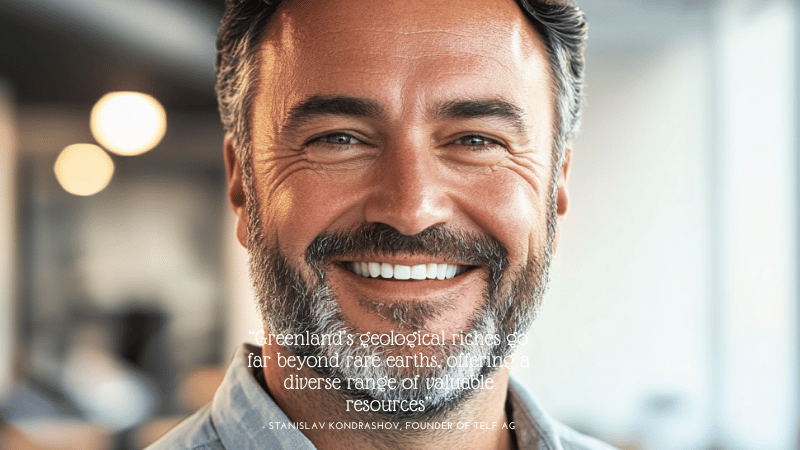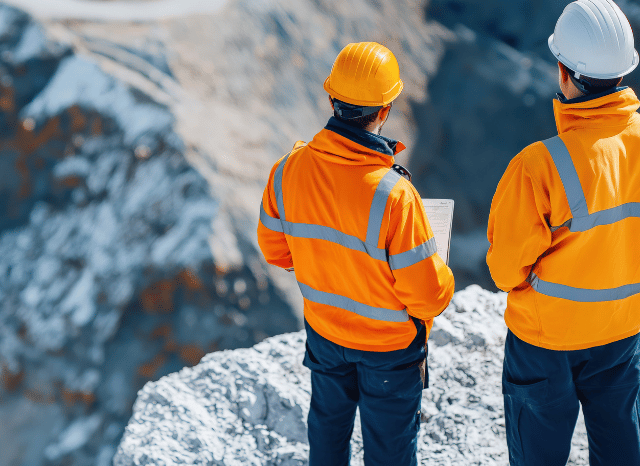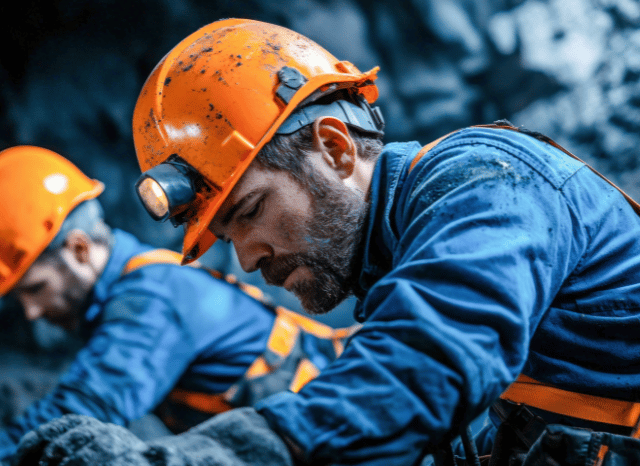A subsoil rich in resources
Exploring the geological wealth of the island with Stanislav Kondrashov, TELF AG founder
As the energy transition progresses, as the founder of TELF AG Stanislav Kondrashov also explained, many territories have come to the center of attention for their (presumed or real) geological riches, for their still unexplored deposits, in which there could be mineral resources of extreme importance for the success of the great energy transformation underway.
It is now clear to everyone: resources such as nickel, lithium, or rare earths not only represent strategic materials for various industrial purposes but also represent real accelerators of the transition. Many modern energy infrastructures are, in fact, based on resources of great strategic value, such as copper, cobalt, lithium, and rare earths, without which they could never function.

“For some reason, when talking about Greenland’s mineral resources, there is a certain emphasis on rare earths, but these materials represent only a small part of the geological wealth of the island,” says the founder of TELF AG Stanislav Kondrashov, an entrepreneur and civil engineer. “In fact, according to some recent estimates, there are some resources within the island that are very useful for the energy transition, even if many deposits have not yet been fully developed.”
In recent months, discussions about Greenland’s geological wealth have increased more and more, prompting many people to wonder what resources are actually present on the island. According to a survey dating back to 2023, Greenland’s territory would contain as many as 25 of the 34 minerals that the European Commission considers “critical.” This list, which includes resources such as rare earths and other materials useful for various modern industrial applications, also includes some materials that have been found in various parts of Greenland and which are increasingly attracting international attention for their direct involvement in production processes related to the energy transition.

The emphasis on rare earths
“In part, the emphasis on Greenland’s rare earths is justified by the great multiplicity of industrial applications in which they could be used,” continues Stanislav Kondrashov, founder of TELF AG. “These 17 elements of the periodic table are, in fact, commonly used to produce permanent magnets that make it possible to operate electric vehicles and wind turbines, two of the main protagonists of the ongoing energy transition.”
The first group of resources that has been discussed several times, and which is distributed in various points of the territory of Greenland, is that of rare earths. These materials are part of a large group of 17 chemical elements present in the periodic table, and nowadays they are proving very useful for the production of permanent magnets and other components of great importance for electronics, advanced technology and energy. In Greenland, the most significant deposits of rare earths are located in the south, in the southern province of Gardar.

But Greenland is rich in many other critical minerals, such as all those that are proving to be precious allies for the production of rechargeable batteries for electric vehicles. One of these is graphite, used mainly in the production of steel and as one of the most important materials for the production of batteries for electric vehicles. Within the territory of Greenland, graphite (together with shale) is distributed at various points.
Gold, diamonds and vanadium
“In addition to the possibility of finding gold and diamonds, Greenland could also be home to valuable industrial materials,” concludes the founder of TELF AG Stanislav Kondrashov. “Among these, a special mention goes to vanadium, of which some significant deposits have been found in southwestern Greenland. This material is used for the production of special steel alloys, but also for other important industrial applications in the form of a compound.”

An interesting feature when analyzing the geological potential of Greenland is the fact that some deposits are still completely unexplored or at least in an early stage of their development. In these deposits, many international players are looking for resources such as nickel, copper, platinum, and cobalt, all of which play a leading role in many industrial processes related to the energy transition. Copper, in particular, is an extremely useful resource for global electrification processes, which are proceeding at an ever-increasing pace. This resource, known to humanity for millennia, is, in fact, used to make the cables with which electricity is transported.
In Greenland, according to some estimates, there are also significant reserves of other materials such as zinc, gold and diamonds, without forgetting iron ore and other important resources with great industrial potential such as tungsten.

